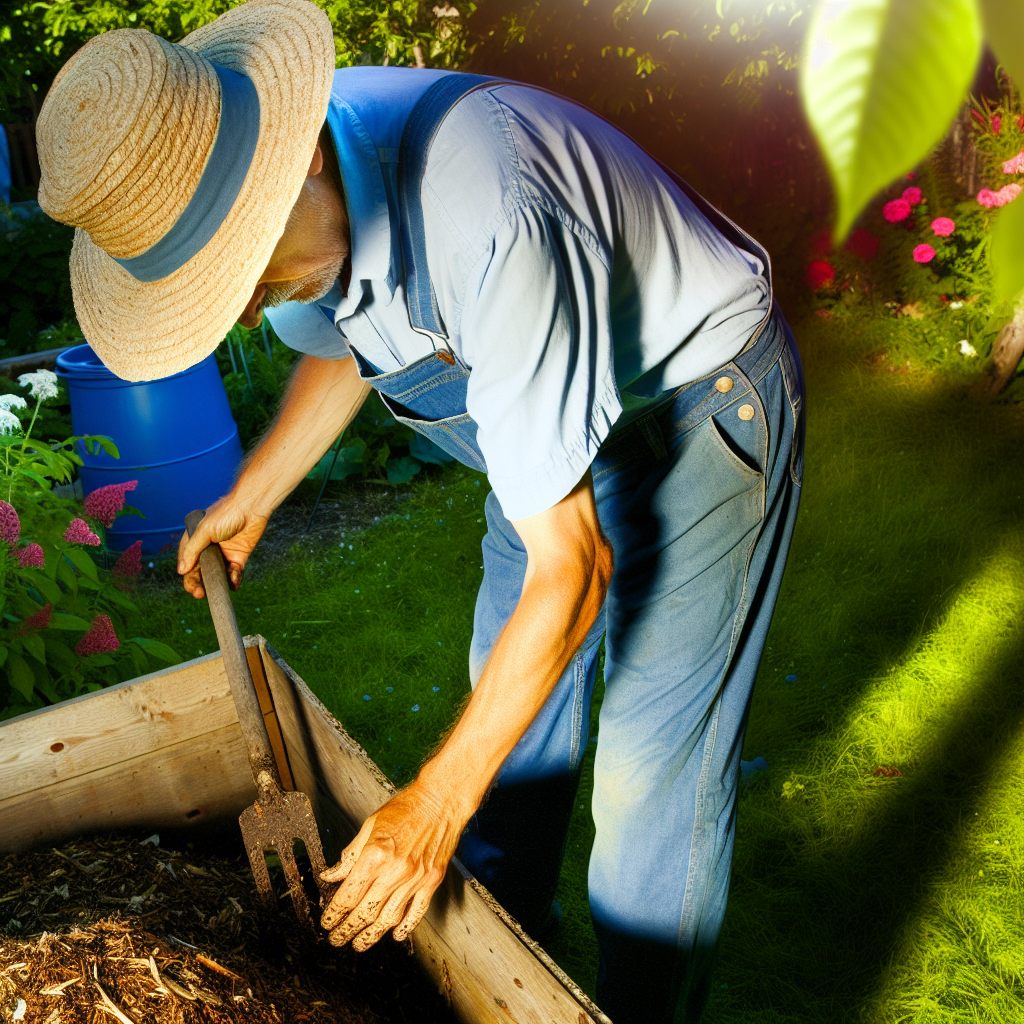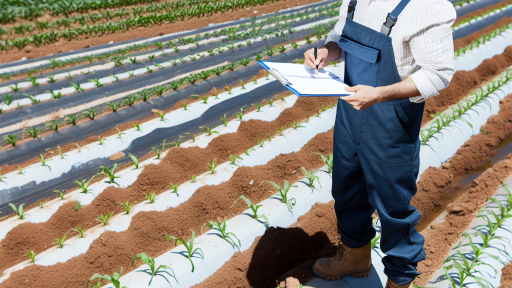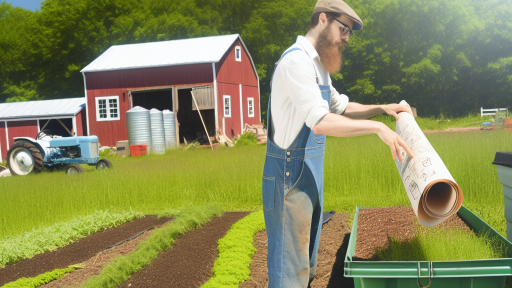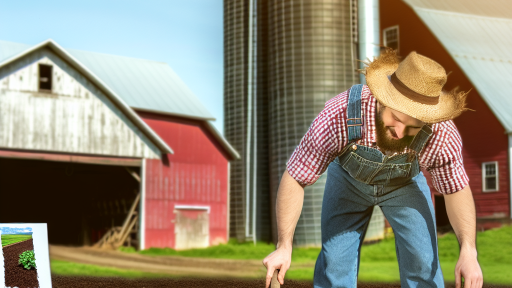Introduction to Composting
Composting plays a vital role in enhancing soil health.
It transforms organic waste into valuable nutrients.
This natural process improves soil structure and fertility.
Moreover, it helps retain moisture in the soil.
In turn, this encourages plant growth and resilience.
Benefits of Composting for Soil Health
Compost enriches the soil with essential nutrients.
It increases the microbial activity in the soil.
This boosts the biological processes that support plant life.
Additionally, compost supports sustainable farming practices.
It reduces the need for chemical fertilizers over time.
Reducing Waste through Composting
Composting helps divert waste from landfills.
It fosters a circular economy by recycling organic materials.
By composting, communities can minimize their environmental impact.
This further contributes to healthier ecosystems.
Composting and Environmental Impact
The composting process lowers greenhouse gas emissions.
Transform Your Agribusiness
Unlock your farm's potential with expert advice tailored to your needs. Get actionable steps that drive real results.
Get StartedIt turns organic waste into a useful resource.
This approach reduces pollution associated with waste disposal.
Ultimately, composting can improve air quality as well.
Types of Composting: Hot, Cold, and Bokashi Methods
Hot Composting
Hot composting generates heat through microbial activity.
This method requires a combination of green and brown materials.
Typically, a ratio of 2:1 green to brown works best.
Monitoring temperature is essential for successful composting.
Extreme heat kills pathogens and weed seeds efficiently.
Regular turning of the pile aerates it, promoting faster decomposition.
Benefits of Hot Composting
Hot composting produces finished compost more quickly.
This method also reduces odors compared to other techniques.
Additionally, it creates a nutrient-rich product for gardens.
It is an excellent way to manage kitchen and yard waste effectively.
Cold Composting
Cold composting is a slower, more passive method.
This technique requires little maintenance or effort.
Using a diverse mix of materials improves microbial activity.
Often, simply layering materials will suffice.
Patience is the key to successful cold composting.
Over time, organic matter will break down naturally.
Benefits of Cold Composting
Cold composting produces compost with minimal effort.
This method is less likely to attract pests or generate odor.
It allows gardeners to use non-ideal materials, such as large branches.
Ultimately, it supports a natural decomposition process.
Bokashi Method
Bokashi is a unique fermentation-based composting technique.
Showcase Your Farming Business
Publish your professional farming services profile on our blog for a one-time fee of $200 and reach a dedicated audience of farmers and agribusiness owners.
Publish Your ProfileThis method uses specialized microbial inoculants for fermentation.
It effectively breaks down kitchen scraps, including meat and dairy.
In just a few weeks, Bokashi produces pre-compost material.
This pre-compost can then be buried in soil to enrich it.
Benefits of Bokashi Composting
Bokashi composting is space-efficient and odor-controlled.
It allows for a wider variety of food scraps compared to other methods.
Additionally, the nutrient-rich end product accelerates soil health.
It also contributes to a sustainable waste management system.
Essential Ingredients: Green vs. Brown Materials
Understanding Green Materials
Green materials are rich in nitrogen.
They help to heat up the compost pile.
Common examples include food scraps and fresh grass clippings.
These ingredients break down quickly in the composting process.
Additionally, they provide essential nutrients for plants.
Defining Brown Materials
Brown materials offer carbon for the compost mix.
They include dry leaves, straw, and cardboard.
These materials decompose more slowly compared to greens.
They contribute to the structure of the compost pile.
Furthermore, they help retain moisture in the compost.
Balancing Greens and Browns
Achieving the right balance is crucial for effective composting.
A typical ratio favors two parts brown to one part green.
This combination promotes optimal aeration and decomposition.
Too many greens can cause strong odors.
Conversely, too many browns may slow down the process.
Gathering Ingredients
Collecting both types of materials is essential.
You can use kitchen scraps as a primary source of greens.
For browns, consider using yard waste or shredded newspapers.
Be cautious to avoid adding meats or dairy products.
These can attract pests and create odors.
Incorporating Other Elements
You might also include additives to enhance compost health.
For instance, coffee grounds provide additional nitrogen.
Eggshells add calcium, promoting plant growth.
Wood ash can help balance pH levels in the compost.
Always mix these additives in small amounts.
See Related Content: Implementing Agroforestry for Water Efficiency
The Composting Process
Aeration
Aeration is essential for healthy composting.
This process facilitates oxygen circulation within the pile.
It helps microorganisms thrive and break down organic materials.
To ensure proper aeration, turn the compost regularly.
Using a pitchfork or shovel, mix the materials thoroughly.
Additionally, consider using aeration tools for larger piles.
Showcase Your Farming Business
Publish your professional farming services profile on our blog for a one-time fee of $200 and reach a dedicated audience of farmers and agribusiness owners.
Publish Your ProfileGood aeration reduces odors and accelerates decomposition.
Moisture
Moisture plays a critical role in composting.
Microorganisms need water to function effectively.
You should aim for a moisture level comparable to a damp sponge.
If the compost is too dry, add water gradually.
On the other hand, if it’s too wet, turn the pile to increase aeration.
Adding dry materials like straw or leaves can also help absorb excess moisture.
Temperature Control
Temperature control is vital for successful composting.
The ideal temperature range for composting is between 130°F and 160°F.
Within this range, microorganisms work efficiently to decompose materials.
To monitor temperature, use a compost thermometer.
If the temperature rises too high, turn the pile to cool it down.
Conversely, if the temperature drops, ensure adequate moisture and aeration.
See Related Content: Cover Crops for Enhanced Carbon Sequestration
Common Composting Mistakes: What to Avoid for Better Results
Piling Up the Wrong Materials
Using incorrect materials is a common mistake in composting.
Avoid adding meats, fats, and dairy products.
These items can attract pests and cause odors.
Instead, stick to plant-based kitchen scraps and yard waste.
Ignoring Proper Aeration
Insufficient aeration leads to poor compost quality.
Compacted piles restrict airflow and create anaerobic conditions.
Regularly turn your compost to introduce oxygen.
This process speeds up decomposition and improves quality.
Neglecting Moisture Levels
Composting requires the right moisture balance.
Too little moisture hinders microbial activity.
Conversely, excess moisture can lead to a smelly pile.
Aim for a damp sponge-like texture in your compost.
Overloading with Green Materials
Excess green materials can create a nitrogen-rich pile.
This imbalance causes odors and slow decomposition.
Add brown materials, such as dried leaves or cardboard, to balance nitrogen levels.
The ideal ratio is about one part green to two parts brown.
Failing to Monitor Temperature
Temperature monitoring is essential for effective composting.
Hot composting speeds up decomposition and kills pathogens.
Check your pile’s temperature regularly to maintain the ideal range.
A range of 130°F to 160°F is optimal for compost health.
Giving Up Too Soon
Composting takes time and patience.
Many beginners abandon projects due to slow results.
Understand that good compost can take anywhere from a few weeks to several months.
Stay committed, and you’ll reap the rewards for your garden.
You Might Also Like: Sustainable Approaches to Farm Byproduct Recycling

Using Finished Compost: Application Techniques for Gardens and Farms
Benefits of Finished Compost
Finished compost enriches the soil naturally.
Showcase Your Farming Business
Publish your professional farming services profile on our blog for a one-time fee of $200 and reach a dedicated audience of farmers and agribusiness owners.
Publish Your ProfileIt adds essential nutrients to support plant growth.
Additionally, it enhances soil structure and aeration.
Moreover, it improves moisture retention in sandy soils.
Ultimately, it encourages beneficial microbial activity.
Preparation for Application
Before applying compost, analyze your soil type.
Test the soil for pH and nutrient levels.
Gather the necessary tools for application.
Use a shovel, rake, and wheelbarrow for distribution.
Wear gloves to protect your hands during the process.
Techniques for Garden Application
Spread a 1-3 inch layer of compost over garden beds.
Mix it into the topsoil for best results.
Use compost when planting seeds or transplants.
Incorporate it into the hole before planting.
Always ensure even coverage to prevent clumping.
Techniques for Farm Application
For larger areas, use a compost spreader for efficiency.
Apply compost during tilling to blend with existing soil.
Consider working compost into row crops before planting.
Additionally, side-dress crops during the growing season.
Adjust application rates based on soil testing results.
Proper Timing for Application
Timing is crucial for effective compost application.
Apply in early spring before planting for best outcomes.
Fall applications can also improve soil health for next season.
Avoid applying compost during heavy rain to prevent runoff.
Regular applications enhance overall soil productivity.
Storage and Preservation of Finished Compost
Store finished compost in a dry, covered area.
Ensure good airflow to prevent moisture accumulation.
Use it within six months for maximum benefits.
Regularly check for pests or unwanted weeds.
Maintain a clean storage site to protect the compost quality.
Learn More: Drought-Resistant Crop Selection for Water Savings
Troubleshooting Compost Issues
Identifying Odors
Unpleasant odors often indicate problems in your compost pile.
The primary cause of smells is an imbalance of materials.
To address odors, start by aerating your compost.
Mixing the pile increases oxygen flow, encouraging aerobic bacteria.
Additionally, ensure you have an appropriate carbon-to-nitrogen ratio.
- Balance green materials like food scraps with brown materials like leaves.
- Aim for a ratio of 2:1 greens to browns.
If the smell persists, consider adding lime to neutralize acidity.
Managing Pests
Compost piles can attract unwanted pests.
To deter pests, ensure proper management of your compost materials.
Avoid adding meat, dairy, or oily foods.
These items can lure animals and insects.
Showcase Your Farming Business
Publish your professional farming services profile on our blog for a one-time fee of $200 and reach a dedicated audience of farmers and agribusiness owners.
Publish Your ProfileCover your compost pile to prevent pest access.
Using a rodent-proof bin can also help keep pests away.
Addressing Slow Decomposition
Slow decomposition can be frustrating for composters.
Check the moisture level in your compost pile.
Your compost should be as damp as a wrung-out sponge.
If it’s too dry, add water gradually until it reaches this level.
Next, ensure your compost pile is adequately aerated.
Turn the pile every few weeks to promote airflow.
Lastly, consider the particles’ size in your compost.
Chopping or shredding materials can speed up the breakdown process.
Advanced Composting Techniques: Vermicomposting and Aerated Static Pile Composting
Introduction to Advanced Composting
Advanced composting techniques enhance traditional composting methods.
These methods improve efficiency and soil health significantly.
Vermicomposting and aerated static pile composting are two exemplary techniques.
Understanding Vermicomposting
Vermicomposting utilizes worms to break down organic waste.
This technique transforms kitchen scraps into nutrient-rich compost.
It requires specific materials for optimal worm health.
Materials Needed for Vermicomposting
- Red wigglers or other composting worms
- Moisture-retaining bedding like shredded newspaper
- Kitchen scraps including fruit and vegetable peels
- A container with proper drainage and airflow
Benefits of Vermicomposting
Vermicomposting produces high-quality compost rapidly.
It also reduces landfill waste effectively.
Moreover, it enriches the soil with beneficial microorganisms.
Aerated Static Pile Composting Explained
Aerated static pile composting involves creating large compost piles.
This method relies on forced air to enhance aerobic decomposition.
It requires specific design and monitoring for success.
Key Components of Aerated Static Pile Composting
- Layered organic materials like yard waste and food scraps
- Air delivery system to maintain oxygen levels
- Moisture control to facilitate microbial activity
- Temperature monitoring equipment to track decomposition
Advantages of Aerated Static Pile Composting
This method accelerates composting times significantly.
It minimizes odors and pests compared to traditional methods.
Furthermore, it produces high-quality compost suitable for various uses.
Combining Techniques for Optimal Results
Using both vermicomposting and aerated static pile methods can maximize benefits.
These techniques complement each other and enhance compost quality.
Experimenting with both can lead to improved soil health and productivity.




